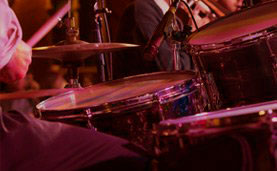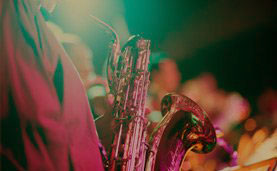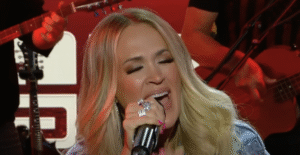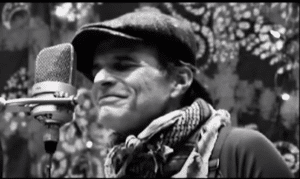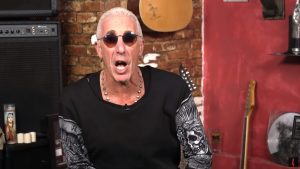10 Interesting Facts And Stories About ‘Bonanza’

via Grjngo - Western Series / YouTube
Long before streaming and cable reshaped entertainment, Bonanza carved out a legacy on network television that few shows have matched. It wasn’t just a western—it was a family saga rooted in loyalty, honor, and emotional complexity. Audiences tuned in week after week not just for frontier shootouts, but for the evolving bonds between a widowed father and his three very different sons.
What made Bonanza truly unique was its unexpected inspiration. Creator David Dortort looked to the legend of King Arthur, casting Ben Cartwright as a noble patriarch and his sons as modern-day knights navigating the challenges of the American West. This layered storytelling gave the show a mythic quality that elevated it far beyond the dusty saloons and outlaw chases typical of the genre.
With its sweeping landscapes, rich character arcs, and one of the most memorable theme songs in television history, Bonanza became more than just a popular series—it became a cultural landmark. But behind its polished production and enduring fame are stories and facts that even longtime fans may have missed. Here are ten of the most intriguing.
1. Psychedelic Rock Met the Wild West in Virginia City
Before California’s Summer of Love ever took off, a different kind of cultural experiment was happening in Virginia City. In 1965, the Red Dog Saloon became a hub for what would later be recognized as the psychedelic rock movement. The Charlatans, the first professional psychedelic rock band, played nightly while pioneering the first light show and creating the now-iconic “Seed” poster.
Interestingly, their aesthetic pulled directly from western TV shows they’d grown up on—cowboy hats, vintage costumes, and toy guns became part of their image. Shows like Bonanza weren’t just background noise; they were visual templates for a generation that craved myth-making and rebellion all at once.
This fusion of old west visuals and counterculture ideals found fertile ground in a town already steeped in cowboy nostalgia. Bonanza’s popularity helped fuel a 1960s revival in Virginia City, encouraging locals and tourists alike to play dress-up in frontier garb and create a living version of the Cartwrights’ world.
View this post on Instagram
2. A Real-Life Ponderosa Ranch Became a Fan Destination
In 1965, Bill and Joyce Anderson transformed their ranch in Incline Village into something more than private property—it became a living tribute to Bonanza. By 1968, it had officially opened as a theme park, drawing fans from all over the country who wanted to walk where the Cartwrights once “lived.” The park eventually became a massive success, running until 2004.
Visitors could explore a near-perfect replica of the Cartwrights’ home, with full access to the first floor. There were hayrides ending in pancake breakfasts, mock gunfights, staged train robberies, and even vintage car shows. It was equal parts theme park and immersive experience, offering nostalgia with a side of flapjacks.
The site also included a Virginia City replica and props used in TV remakes, along with quirky additions like tombstones for each Cartwright brother. With spots like Hoss’ Mystery Mine and burger joints named after the characters, the park made it easy for fans to blur the line between fiction and real-life fun—all against the scenic backdrop of Lake Tahoe.
3. Dan Blocker Took Bonanza to the Buffet Line
Dan Blocker, who played the beloved “Hoss” Cartwright, brought the frontier to the food court. In 1963, he opened a buffet-style restaurant inspired by the show. Featuring hearty steaks and down-home sides, the concept took off quickly, eventually growing into a national chain that lasted for decades.
At the same time, an entirely separate restaurant chain—Ponderosa Steakhouse—was founded by Charles Kleptz, Norm Wiese, and Dan Lasater. The two brands operated independently for years, capitalizing on the popularity of Bonanza to serve up affordable family meals across the U.S. and Canada.
It wasn’t until 1997 that both brands merged under Metromedia Family Steakhouses. Despite eventually filing for bankruptcy in 2009, a few of these restaurants still remain, serving as nostalgic time capsules for fans of the show. For many, these steakhouses weren’t just eateries—they were extensions of the Cartwright legacy.
View this post on Instagram
4. The Show’s Virginia City Was Mostly a Hollywood Illusion
While Bonanza was set in Virginia City, Nevada, most scenes weren’t actually filmed there. Instead, the production team built a convincing mock version on a 24-acre property near North Lake Tahoe. This setup provided stunning outdoor visuals—think rolling hills and scenic lake views—that became synonymous with the show.
Still, most episodes were shot on soundstages in Los Angeles, and that meant the Virginia City seen on television differed greatly from the real one. Gone were the steep hills, historic buildings, and mining infrastructure; in their place stood flattened streets and simplified facades.
Despite this disconnect, the television version captured imaginations so powerfully that fans flocked to both the replica and the real town. With each new episode, more viewers pulled out maps and made plans to see the mythic West for themselves—even if it didn’t quite match what they saw on screen.
View this post on Instagram
5. Virginia City Reinvented Itself to Match the Show’s Fantasy
The real Virginia City had a gritty, industrial past that included miners, tycoons, and dangerous working conditions—not exactly cowboy material. But thanks to Bonanza’s rise, that history took a backseat to fan expectations. Tourists didn’t want smokestacks; they wanted saloons, gunslingers, and dusty streets.
To meet demand, shop owners adapted. Brick buildings got covered with rustic-looking plywood, and workers dressed up like sheriffs and outlaws. Even the terrain seemed to transform, as more focus was placed on visual nostalgia than geographic accuracy. This movement became known as “Bonanzafication,” a term coined to describe the makeover spurred by the show’s popularity.
As historian Peter B. Mires noted, Virginia City essentially bent to Hollywood’s will. The town reshaped itself into a caricature of the Old West—not to preserve history, but to sell an illusion. And in doing so, it created a tourism industry that endures to this day, built on the shoulders of the Cartwrights.
6. Michael Landon Wore Lifts to Stand Taller Than His Co-Stars
While fans swooned over Michael Landon’s portrayal of “Little Joe” Cartwright, few realized he wasn’t as tall as he seemed. According to Outsider, Landon wore four-inch lifts in his shoes during filming to match the stature of his towering co-stars. At 5 feet 9 inches, Landon wasn’t short by any means—but compared to the rest of the Bonanza cast, he often found himself looking up instead of across.
Lorne Greene and Pernell Roberts both stood at 6 feet, while Dan Blocker—“Hoss” Cartwright—was a commanding 6 feet 4 inches and weighed between 300 and 365 pounds. Blocker once joked that he was “too big to ride and too little to hitch a wagon to,” underscoring his physically imposing presence. The size disparity made Landon’s decision to wear lifts more about on-screen balance than vanity.
Landon would later employ similar tricks on Little House on the Prairie, ensuring Charles Ingalls often stood on stairs, ladders, or raised terrain to maintain a paternal visual presence. For Landon, projecting physical authority was key to embodying fatherly roles, even if it meant creative staging and a pair of elevated boots behind the scenes.
View this post on Instagram
7. Bonanza Was the First Show Fully Filmed in Color
When Bonanza debuted, most television shows were still black-and-white affairs. But NBC and RCA had different plans. As reported by Real Clear History, Bonanza became the first TV series to air entirely in color. This wasn’t just for artistic flair—it was also a strategic move to drive sales of RCA’s color televisions. To show off the vibrant new medium, the producers chose the Lake Tahoe area for its breathtaking landscapes and shot the series accordingly.
Casting also followed this philosophy. Rather than bringing in high-profile actors, the network opted for lesser-known talent to create new stars that would be instantly associated with color TV. The gamble paid off. With compelling family dynamics, lush visuals, and vivid characters, Bonanza soared in popularity, becoming NBC’s flagship western for over a decade.
What began as a marketing experiment quickly evolved into something more meaningful. According to Live About, the show’s strong storytelling and beloved cast overtook its original commercial purpose. The producers may have started with sales in mind, but they ended up creating a cultural icon that resonated far beyond the television showroom.
8. The Show Nearly Got Canceled After Its First Season
Despite the colorful visuals and heartfelt storytelling, Bonanza didn’t have an easy start. Its first season faced low ratings and a difficult Saturday night timeslot opposite Perry Mason. As Country Music Family notes, the show failed to crack the top 30 during that initial year, putting it on the chopping block. NBC executives seriously considered canceling it after just 13 episodes.
But a stroke of scheduling genius saved the day. Moving the show to Sunday nights at 9 p.m. gave Bonanza a fresh chance—and it paid off immediately. With the support of a Chevrolet sponsorship and renewed network backing, the series gained momentum in its second season. Ratings began to climb, and a loyal fan base took root.
Behind the scenes, financial worries persisted. The show cost $105,000 per episode, a high figure for the time. Thomas Sarnoff, NBC’s West Coast executive VP, convinced New York to give the show a second chance by promising to keep it on budget moving forward. He delivered, and soon Bonanza became a ratings juggernaut that would last 14 seasons.
9. Star Trek Actors Made Surprising Cameos on Bonanza
Bonanza wasn’t just a hotspot for western fans—it also served as a surprising connection to the world of Star Trek. Several of the science fiction show’s future stars made appearances in frontier attire on the Ponderosa. As Do You Remember points out, the crossover roster included Ricardo Montalban, DeForest Kelley, Majel Barrett, Leonard Nimoy, and James Doohan.
Ricardo Montalban played a Native American character in “Day of Reckoning,” long before becoming the iconic Khan. DeForest Kelley had several roles across the series, including a memorable appearance as Captain Moss Johnson. Even Leonard Nimoy showed up as a dandy who found himself on the wrong side of a bar fight.
The guest star list didn’t stop there. Bonanza also welcomed faces like Dennis Hopper, Charles Bronson, Bob Barker, and a trio of future Batman icons—Adam West, Cesar Romero, and Burgess Meredith. With such an eclectic guest roster, Bonanza doubled as a proving ground for actors who would later shape television and film in entirely different genres.
10. Most of the Cast Wore Hairpieces—Except for Michael Landon
While Michael Landon’s good looks drew plenty of attention, it turns out he was the only original cast member who didn’t wear a hairpiece. According to Outsider, Lorne Greene, Pernell Roberts, Dan Blocker, and Victor Sen Yung all sported toupees or augmented hair to maintain their screen-ready appearances. Landon, on the other hand, flaunted a full head of hair—even if it was dyed to cover early grays.
Lorne Greene famously lost his hairpiece during a river scene, retrieving it mid-shot before emerging from the water. Roberts also wanted to ditch his toupee but was denied, as creator David Dortort needed him to appear younger than Greene—despite only a 13-year age gap. Fans even spotted Roberts’ hairpiece floating away in the episode “Thanks for Everything, Friend.”
Dan Blocker began wearing a toupee in 1968, and even family cook Hop Sing had a little help with his hair. That made Landon’s glossy mane a standout feature. Though not entirely natural—he started dyeing it in his twenties—his hair remained a defining part of his image and one of the many reasons fans adored “Little Joe.”


